Passports in Europe are issued by each state individually, e.g. the Netherlands or United Kingdom. In general, passports issued in Europe either grant the holder the right of freedom of movement within the European Economic Area (EU and EFTA passports), to those that don't (EU candidate countries and other non-EU European states).[clarification needed] The majority of European states are members of the European Union, and therefore issue EU passports.
All passports issued in Europe are B7 size and (ISO/IEC 7810 ID-3, 88 mm × 125 mm). The overwhelming majority of European passports are biometric (![]() ). These include all EU, EFTA, British, and EU candidate passports.
). These include all EU, EFTA, British, and EU candidate passports.
There are also several passports issued by partially-recognised and disputed states, such as Northern Cyprus and Kosovo.
Passports of the European Union
The EU itself does not issue ordinary[clarification needed] passports, but ordinary passports issued by the 27 member states follow a common format.[1] This includes a burgundy cover (not compulsory: Croatia is the only exception) emblazoned with the title "European Union", followed by the member state's name in their official language(s) (occasionally translation into English and French), their coat of arms, the word "PASSPORT", together with the biometric passport symbol ( ).[2] Holders of EU passports are citizens of the European Union and entitled to exercise the rights of that citizenship, e.g. freedom of movement.
).[2] Holders of EU passports are citizens of the European Union and entitled to exercise the rights of that citizenship, e.g. freedom of movement.
Some EU member states also issue non-EU passports to certain people who have a nationality which is not supplemented by European Union citizenship (e.g., Danish nationals residing in the Faroe Islands).
In addition, the European Commission issues European Union Laissez-Passers to the members and certain civil servants of its institutions.[3]
| Member state | Passport cover | Biodata page | Validity | Issuing authority | Latest version |
|---|---|---|---|---|---|
 Austria Austria |  |
| Municipal registration offices If abroad, Austrian embassies and consulates | 5 September 2014[4] | |
 Belgium Belgium | 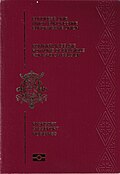 | Link to image |
|
| 1 May 2014[5] |
 Bulgaria Bulgaria | 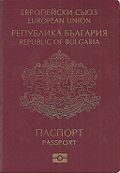 | Link to image |
| Ministry of Interior Affairs | 29 March 2010 |
 Croatia Croatia | 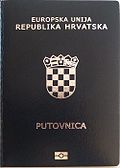 | Link to image |
|
| 3 August 2015 |
 Cyprus Cyprus |  | Link to image |
|
| 13 December 2010 |
 Czech Republic Czech Republic | 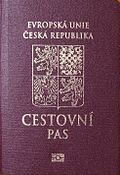 | Link to image |
|
| 1 September 2006 |
 Denmark Denmark | 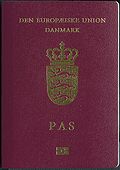 | Link to image |
|
| 1 January 2012 |
 Estonia Estonia |  | Link to image |
| 1 January 2021 | |
 Finland Finland |  | Link to image |
| 1 January 2017 | |
 Finland Finland Åland Islands[7] Åland Islands[7] |  | Link to image |
| 1 January 2017 | |
 France France | 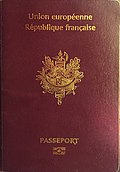 | Link to image |
|
| 12 April 2006 |
 Germany Germany |  | Link to image |
| Municipal registration offices If abroad, German embassies and consulates, including some honorary consulates | 1 March 2017 |
 Greece Greece |  | Link to image |
| National Passport Centre ("Διεύθυνση Διαβατηρίων/Αρχηγείο Ελληνικής Αστυνομίας") | 28 August 2006 |
 Hungary Hungary | 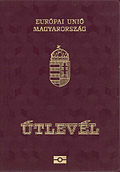 | Link to image |
| Registration Office (Nyilvántartó Hivatal) | 1 March 2012 |
 Ireland Ireland |  | Link to image |
| Consular and Passport Division of the Department of Foreign Affairs | 3 October 2013 |
 Italy Italy |  | Link to image |
| Minister of Foreign Affairs through
| 20 May 2010 |
 Latvia Latvia | 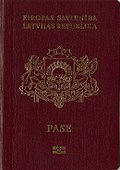 | Link to image |
|
| 29 January 2015[11] |
 Lithuania Lithuania |  | Link to image |
| 27 January 2011 | |
 Luxembourg Luxembourg |  | Link to image |
| Bureau des passeports | 16 February 2015[5] |
 Malta Malta | Link to image | Link to image |
| Passport & Civil Registration Directorate | 29 September 2008 |
 Netherlands Netherlands | 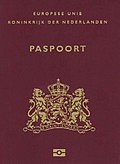 | Link to image |
|
| 23 December 2017 |
 Poland Poland | 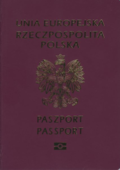 | Link to image |
|
| 5 November 2018 |
 Portugal Portugal |  | Link to image |
| 10 July 2017 | |
 Romania Romania | 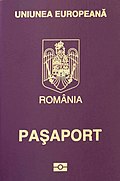 | Link to image |
| Ministry of Internal Affairs (General Directorate for Passports) | 12 January 2019 |
 Slovakia Slovakia | 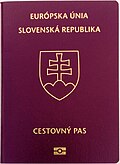 | Link to image |
|
| 26 November 2014 |
 Slovenia Slovenia |  | Link to image |
| 12 December 2016 | |
 Spain Spain | Link to image | Link to image |
| 2 January 2015 | |
 Sweden Sweden |  | Link to image |
|
| 1 January 2022 |
Passports of European Union candidate countries
Since the establishment of the European Economic Community, previous enlargements have seen the founding Inner Six states of 1958[13] grow to the EU's current 27 member-states. Currently, there are nine recognised candidates for future membership of the EU: Turkey (applied in 1987), North Macedonia (applied in 2004), Montenegro (applied in 2008), Albania (applied in 2009), Serbia (applied in 2009), Bosnia and Herzegovina (applied in 2016), Ukraine (applied in 2022), Moldova (applied in 2022) and Georgia (applied in 2022). All except Bosnia and Herzegovina, and Georgia have started accession negotiations.[14]
Unlike EU and EFTA passports, nationals carrying passports of EU candidate countries do not have free movement rights and are required to possess appropriate visas.
| Candidate state | Passport cover | Biodata page | Validity | Issuing authority | Latest version |
|---|---|---|---|---|---|
 Albania Albania | 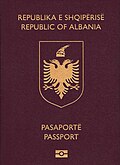 | Link to image |
| Ministry of the Interior | 2015 |
 Bosnia and Herzegovina Bosnia and Herzegovina |  | Link to image | 1 October 2014 | ||
 Georgia Georgia |  | Link to image | 26 February 2010 | ||
 Moldova Moldova |  | Link to image |
| Agency of public services [16] or Moldovan foreign representationsabroad | 5 April 2023 |
 Montenegro Montenegro |  | Link to image |
| Ministry of the Interior[17] | 2008 |
 North Macedonia North Macedonia |  | Link to image |
| Ministry of the Interior[18] | 2019 |
 Serbia Serbia |  | Link to image |
| Ministry of the Interior[19] | 7 July 2008 |
 Turkey Turkey |  | Link to image |
| Ministry of the Interior[20] | 25 August 2022 |
 Ukraine Ukraine |  | Link to image |
| State Migration Service (part of the Ministry of Internal Affairs)[21] | 1 January 2015 |
Passports of EFTA member-states
Like the EU, EFTA itself does not issue ordinary passports. It also does not issue any guidelines for a common passport design and format. The EFTA member states participate in the European Single Market and are part of the Schengen Area.[22] EFTA member-states include Iceland, Norway, Switzerland, and Liechtenstein.
In accordance with the EFTA convention, nationals of EFTA member-states enjoy freedom of movement in each other's territory.[23] EFTA nationals also enjoy freedom of movement with the EU. EFTA nationals and EU citizens and are not only visa-exempt but are legally entitled to enter and reside in each other's countries. The right of freedom of movement is defined by the Citizens’ Rights Directive, which defines the right of free movement for citizens of the European Economic Area (EEA),[24][25] which includes the three EFTA members Iceland, Norway and Liechtenstein and EU member-states. Switzerland, which is a member of EFTA but not of the EEA, is not bound by the Directive but rather has a separate bilateral agreement on free movement with the EU.[26]
| Member state | Passport cover | Biodata page | Validity | Issuing authority | Latest version |
|---|---|---|---|---|---|
 Iceland Iceland |  | Link to image | 10 years (adults) | Registers Iceland (Þjóðskrá Íslands) | 23 May 2006[27](biometric) June 2013[28](current version) |
 Liechtenstein Liechtenstein |  | Link to image |
| Ausländer- und Passamt | 26 October 2006[29] |
 Norway Norway |  | Link to image |
| Norwegian Police Service | 19 October 2020[30] |
 Switzerland Switzerland |  | Link to image |
| Canton passport office | 31 October 2022 |
British passports
Following the end of the UK's EU withdrawal transition period on 31 December 2020, British passports no longer grant holders the right to free movement within the EEA. British passports are issued to all types of British nationals. These include British Nationals (Overseas), British Overseas Territories Citizens (BOTCs), and British citizens resident in the Crown Dependencies.
The UK also participates in the Five Nations Passport Group, along with Canada, Australia, New Zealand, and the US.
In Europe, British passports are issued to British citizens, BOTCs in Gibraltar, and British citizens resident in the Crown Dependencies (Jersey, Guernsey, and the Isle of Man).
| Country | Passport cover | Biodata page | Validity | Issuing authority | Latest version |
|---|---|---|---|---|---|
 United Kingdom United Kingdom |  | Link to image |
| HM Passport Office | March 2020 |
 Isle of Man Isle of Man |  | ||||
 Jersey Jersey | 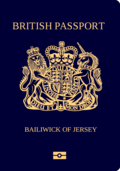 | June 2020 | |||
 Guernsey Guernsey |  | ||||
 Gibraltar Gibraltar |  | Gibraltar Civil Status and Registration Office | October 2015 |
Other European passports
| Member state | Passport cover | Biodata page | Validity | Latest version |
|---|---|---|---|---|
 Armenia Armenia |  | Link to image | 10 years (adults) | 16 July 2012 |
 Azerbaijan Azerbaijan |  | Link to image | 1 year: children under age of 1 3 years: children under age of 3 5 years: children under age of 18 10 years: Adults | 1 September 2013 |
 Belarus Belarus |  | Link to image | 10 years | 15 May 2006 |
 Faroe Islands Faroe Islands |  | Link to image | 10 years: adults 5 years: children | 1 January 2012 |
 Kazakhstan Kazakhstan |  | Link to image | 10 years | 1 January 2009 |
 Kosovo Kosovo | Link to image | Link to image | 10 years: Adult 5 years: Child | 1 January 2013 |
 Sovereign Military Order of Malta Sovereign Military Order of Malta | Link to image | Link to image | ||
 Monaco Monaco |  | Link to image | 5 years | 26 October 200 |
 Northern Cyprus Northern Cyprus |  | 5 years | ||
 Russia Russia |  | Link to image | 10 years | 1 March 2010 |
 San Marino San Marino | Link to image | Link to image | 10 years: over 14 5 years: aged 3–14 3 years: under 3 | 12 October 2006 |
See also
- Visa requirements for European Union citizens
- Citizenship of the European Union
- National identity cards in the European Economic Area
- Passports of the EFTA member states
- Passports of European Union candidate states
- Five Nations Passport Group
- Visa policy in the European Union
- Schengen Area
- European Union laissez-passer
- British Passport



